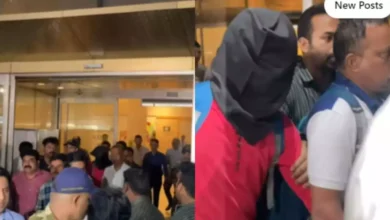Accepting cultural legacies across boundaries
When Shalini Sivashankar relocated from Bahrain to the UK in 2002, she was a working banker and a single mother. She began teaching Bharatanaytam because she wanted to share her greatest delight with her daughter. She is no longer a banker, and there are now 250 pupils enrolled in her dancing school, Upahaar. She recently celebrated her company’s 20th anniversary by bringing in Indian artists and introducing her pupils to the “art of sadhana.” “I was born and raised in India, and as a young adult, I have gone to sabhas to see the greats in action.Advaita philosophy has never truly been taught, but I am aware of its core just by doing the art form,” the woman claims. Even though millennials have unrestricted access to information, Shalini believes that knowing is not the same as experiencing it.

The only area of the Indian knowledge system that focuses on experiential education and integrates abstract thinking and abstract emotion is the performing arts. Since 2005, Aravinth Kumarasamy has been the director of the Apsara Dance Company in Singapore.
The group is the largest Indian dancing group in the world. The audience is treated to a visual feast with its elaborate dance shows. They never change the syntax of any of the other Southeast Asian art forms they work with. In addition to the conventional themes derived from Indian mythology, the group daringly plays with abstract elements of holy (akam) and social (puram) domains. One such production is “Arisi: Rice,” which was just seen at Chennai’s Music Academy. Aravinth continues his global tour, alternating between Singapore and India. His book “Aham: From The Creative Mind to the Stage” was published in Chennai on March 2.
Regarding the triumphs of Apsara Dance Company, Aravinth said, “We think that the dance community has to meet together annually. Thus, the Indian Performing Arts Convention (IPAC) is organized. There have been 15 successful IPAC Singapore editions and 4 successful IPAC Australia editions. Master workshops, lecture-demonstrations, book releases, paper presentations, and performances by industry icons have all taken place throughout each edition. We also provide young musicians and dancers residence chances, which inspires them to develop fresh concepts.
Carnatic music has been influenced by the Indian diaspora in addition to dance. Cleveland, Ohio, USA hosts the largest Indian Annual Music Festival nowadays. Of the 350 persons who sang Pancharathna Kritis on stage in 2019, 4,820 people attended the event at a stadium; 150 of them traveled from India just to attend the festival in Cleveland.
The event had a very humble beginning, according to VV Sundaram, co-founder and secretary of the Cleveland Thyagaraja Aradhana (CTA) Committee. When Cleveland hosted its first aradhana in 1978, there was only one concert and about seventy people showed up. Today, the site and program are just becoming bigger every year.
He responds, “America is a land of opportunities that gives a lot of freedom,” when questioned about its breadth and work. With so much freedom, I have seen up close how some of them become lost and walk astray into the dark. Such occurrences had a profound effect on me. I wondered, How can you guide humanity in a culture that grants unrestricted freedom? Therefore, we established cultural learning models in American temples to ensure the moral future of Indian youngsters residing in America. Scientist VK Vishvanathan was the one who got Sundaram involved in promoting Indian art in the late 1960s.
Raising money to bring together the finest Carnatic musicians and classical dancers annually to expose children of Indian descent to artistic excellence without sacrificing the traditional presentation style is commendable in this age of reality shows and digital streaming. Sundaram persistently upholds the cultural awareness of young Indians by means of the CTA.
Undoubtedly, Sundaram’s seeds have produced fruit. Because so many kids in that region of the globe are drawn to Indian music and dance, a large number of Indian accompanying artists go to North America where they instruct pupils and conduct arangetram rehearsals for a whole quarter. The accompanying musicians have greatly benefited from this yearly trip, which has raised their level of life.
Dance percussionist Shanmugalingam Nagarajan remarks, “It is remarkable how the children there take to our traditions.” Nagarajan has been traveling to the US and Canada since 2007. They were raised and born in a separate country, where their cultures had been assimilated. However, they also succeed in striking a balance by demonstrating a strong sense of fervor and pride for their Indian identity and cultural history.
Dr. Murali Parthasarathy has performed in several major festivals, such as Jacob’s Pillow (MA, USA), Lincoln Center (NY, USA), Musee Guimet (Paris), and Théâtre de la Ville (Paris). She is the singer for numerous dancers, including Malavika Sarukkai and Alarmel Valli. In his conversations with TNIE, he describes in amazement how Indian performers are regarded outside of India and thanks all of the performers who have introduced him to the world’s top performance venues. Treasures such as Bharatanatyam and Carnatic music developed from the churning of the soil in Thanjavur. In the years after independence, they made a strong name for themselves in Chennai. However, the Indian diaspora lost their geographical identity as they embraced their cultural heritage. They have justifiably gained international recognition, bringing honor and dignity to their home area.







